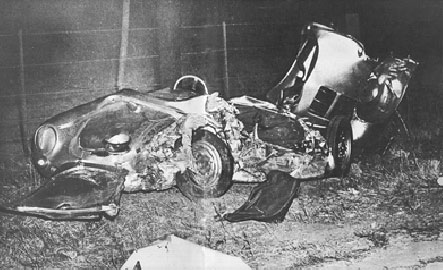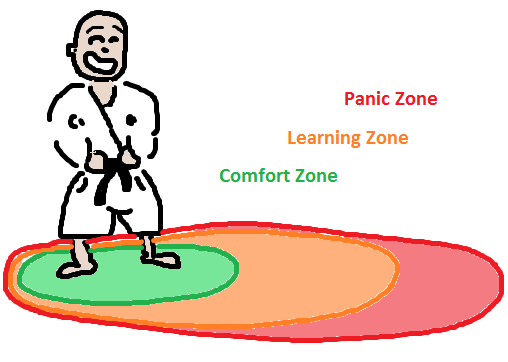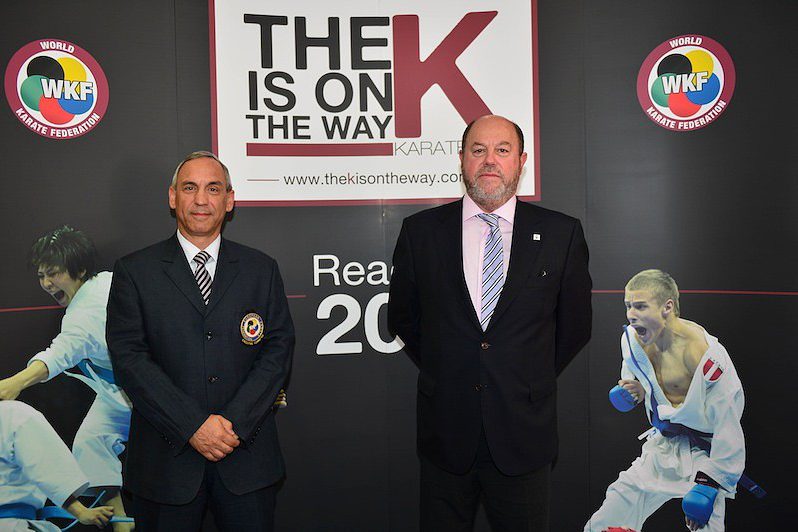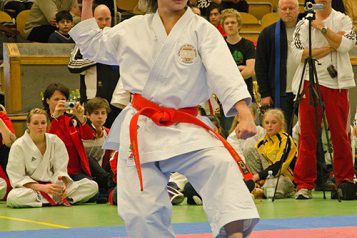The other week I was teaching a self-defense (= Karate) technique, where you slip under your opponents attempted neck grab and take him down in the process.
Nothing special, but not the easiest technique in the book for a beginner, you know?
So, I show the technique a couple of times; slow, fast, medium pace, with elaborate explanations, without explanations, with some humor, with some seriousness – the same old song – when I suddenly hear somebody whisper “He makes it look so easy!”.
“He makes it look so easy!”.
I pretended I didn’t hear anything, because frankly I didn’t care much for the comment at the moment (let’s just say I’ve heard it a couple of times before), but afterwards I gave it some second thought.
And I’ve come to the conclusion that I don’t want to hear it.
“He makes it look so easy”
Ever again.
Perhaps you’ve heard it (or even said it) yourself?
To most people, I guess “He/she makes it look so easy” is a compliment. Indeed, in many ways it is: Having practised a technique for years will quite often make it look pretty easy, even though it might be hard for others, because, well, for you it IS easy. It’s a fact. That’s why you practise, right? To make thing easier? Because when things look easy to do, you are doing your best? Right?
Wrong.
Hogwash upon hogwash.

To the best of my knowledge; making things look easy means you have successfully achieved a satisfactory level of performance (optimal for your current stage), and your body has now adapted to the situation. It’s like driving a car. At first we struggle with shifting gear, checking the mirrors, using the brakes and so on, but eventually we put it all together. Suddenly you might be driving to the store without even remembering how you drove there. You just drove.
Recognize yourself?
So, for a kid who is about to take his driver’s license, you are a driving god. You don’t even think twice about talking on the cell phone, reading a book, eating a sandwich and driving at the same time. It’s nothing. Just driving. It’s an automatic process.
You are, in other words, making it look easy.
Because it is.
You have been driving for years.
And – here’s the catch – you have absolutely no intentions on improving your driving.
Nobody has, except professional Formula 1 race car drivers. Your level of driving is satisfactory. You can handle most normal traffic situations: drive in wet conditions, darkness, snowy roads, mountain roads, highways… You can do it all, son. You have nothing to gain by trying to actively improve you driving everytime you hit the road.
And that is precisely why I never want to hear people tell me I make things look easy.
Because when you reach that final stage, where a skill has become automatic, your rate of improvement slows dramatically.
And I definitely don’t want that.
Neither should you.
At least not when it comes to Karate.
You see, frequently when we see great performers doing what they do, it strikes us that they’ve practiced for so long, and done it so many times, they can just do it automatically. “They make it look so easy”, right?
But in fact, what they have achieved is the ability to AVOID doing it automatically.
And that, dear Karate colleagues, is the key.
Or else they wouldn’t have become who they are.

Great performers, whether it’s in Karate or Formula 1, golf or tennis, chess or boxing, never allow themselves to reach that automatic, arrested-development stage in their chosen field. They never want to make things look easy, at least not when they’re practising on their own. Because that is a failure on their part, and defeats the whole goal of training (unless training consists of active recovery).
Purposefully avoiding going beyond automaticity means you’re always getting better.
Continuous improvement.
And that’s exactly what we want.
I see it like this:
(move over, Picasso!)
First, we have the Comfort Zone.
99% of your peers will be found in this category most of the time, regardless of what field we’re talking about. But let’s talk Karate for now, mmkay?
In this field, training is always comfortable and enjoyable. Hence, the label “Comfort Zone”, and why it lies closest to us. People who come to you after training, telling you that “today’s practise felt great, I kicked everybody’s ass and then went through all my katas effortlessly, without even thinking!” are deep in the Comfort Zone.
Way too deep.
In fact, though these people may be enthusiastic some of the time, most of the time they’re more like zombies, going through whole sessions without even ONCE stopping and saying to themselves “Yo, hold up son, stop. What the frick am I doing? Why am I doing this? And what do I hope to accomplish by doing this, in this fashion?”. Thoughts like these are very foreign in the Comfort Zone, because they serve no purpose here. Actually, I even know people who achieved black belts without ever dipping their toes into other zones than the Comfort Zone.
They train like they’ve always done. And they like it.
Nothing wrong with that.
(Unless you’re me…)
Now let’s look at the Panic Zone.
The Panic Zone is, like the name implies, not a good place to be. A few of your peers will always be found in this zone, struggling with everything, every class. Both mentally and physically. They are, in other words, “doing too much”. To use a car analogy again; they either don’t know where the breaks are located, or don’t like driving slow. It makes them feel like losers. Either way, they’re ultimately headed for eternal fame.
James Dean kind of fame, that is.
Because no matter how nice your Porsche is, you can’t be driving around the edge of the Panic Zone cliff expecting to come home safe and sound.

People who train in the Panic Zone are quite often absent from class in periods (injured, hurt or sick) but when they do show up, you know all hell will break loose, much to the amusement of people in the Comfort Zone who view these daredevils as enjoyment, lunatics or people better than themselves. The downside is, of course, that Comfort Zone people think Panic Zone people are doing it all right.
Which frightens them, making them bury their heads even deeper into the sand of comfort.
But, they’re not.
They’re just misinformed.
The truth is, only by choosing activities in the Learning Zone can one make any significant leaps of progress in Karate, or any other field. And choosing the Learning Zone is all about locating skills and abilities that are just out of reach. Not aiming too low, and not way over your head.
But just in front of you, just out of reach.
That’s where the Learning Zone is.
That’s where YOU need to be.
But everything has a flip side. The downside of being in the Learning Zone is that you will never feel like you are a master of anything. In fact, most of the time you will feel a slight sensation of suckiness. Like you’re almost there. And that feeling – of pushing the edge further and further – is one not many people like. So they either purposefully avoid it, continuing on their automatic behaviour of the Comfort Zone, or they blow it out of proportion, flip out totally, go “all in”, leaving no enemy behind (Panic Zone).
Don’t.
Just don’t.
Training is not a tryout for the national squad. Nobody is there to judge you. You don’t need to chillax in the Comfort Zone because of other people, or work your butt to pieces because of other people. Sure, people will be wondering why you don’t look more comfortable or more excited – because that’s the two zones most other people are in – but that’s just because they don’t know about the Learning Zone. And when you tell them that “Well… Jesse told me to press on, and always maintain in the Learning Zone” they will think you’re fooling them.
Because only two zones exist for them.
However, if a lie told often enough becomes the truth, so too must a truth not told often enough become a lie.
Or at least treated like one.
So stay in that zone, and keep doing your thang.
And if people start judging, put the info on your foot and have them facing the facts. Comfort Zone people and Panic Zone people are as eager for your conversion to their group as they are indifferent to any degeneration that you undergo as a result.
So, with that being said, I think you can safely divide every black belt holder on this planet into one of three groups:
- People who got their black belt because they had been training for so long.
- People who got their black belt because they had been training so hard.
- People who got their black belt because they had improved so much.
Or, to put it another way:
- (Comfort Zone)
- (Panic Zone)
- (Learning Zone)
But, to me, volume (1) and intensity (2) means nothing if you don’t have a direction (3).
And herein lies the biggest challenge that any teacher, across any field, will ever face: getting your students to the Learning Zone, and making them stay there. Without making it neither too comfortable nor too uncomfortable.
In other words, make them get used to gradually working away suckiness, while at the same time finding new areas of suckiness to work away.
Never making things look easy.
Which, in closing, reminds me of another thing that happened after the class where somebody whispered “He makes it looks so easy!” the other week:
As I came out from the dojo later that evening, having pulled off an awesome Kobudo session, a bald man in his 50’s, with orange belt, sweaty as an Okinawan ice cream cone in August, is sitting on the bench after his Karate class.
Looking slightly in despair, he looks up to me and says: “I could be at home right now, having a grog. But here I am!” and starts laughing uncontrollably.
Wow.
Seems somebody was having a rare case of zone specific introspection.
If he only knew…




17 Comments